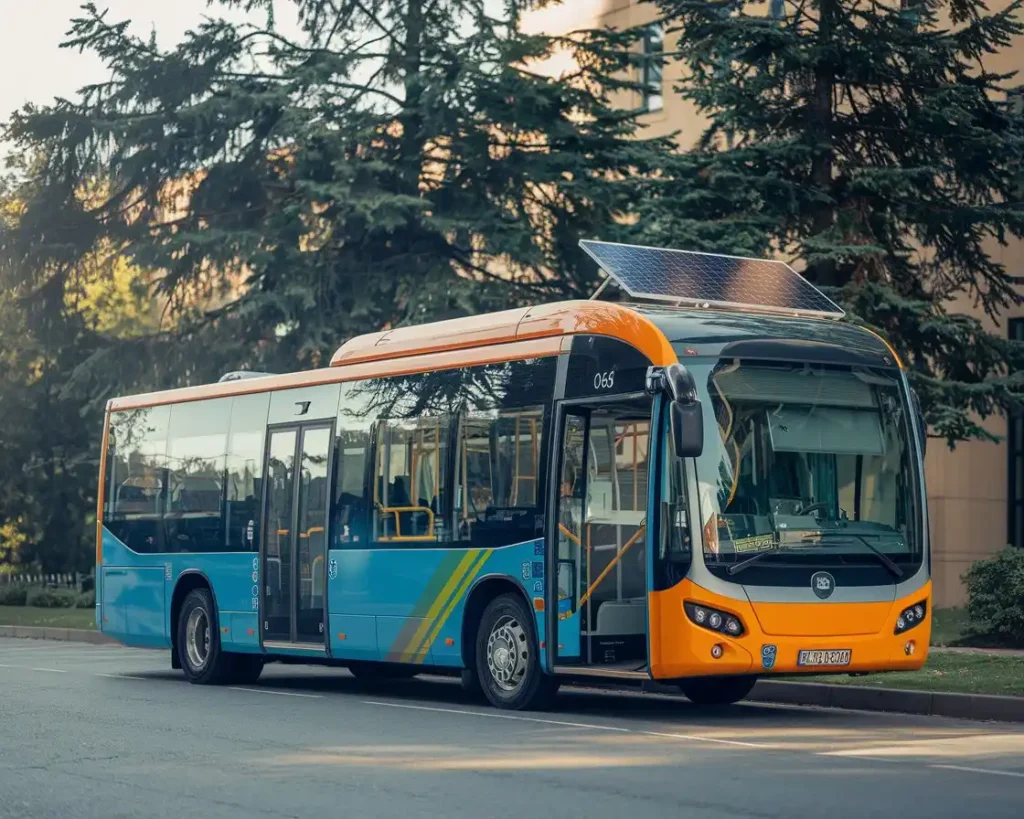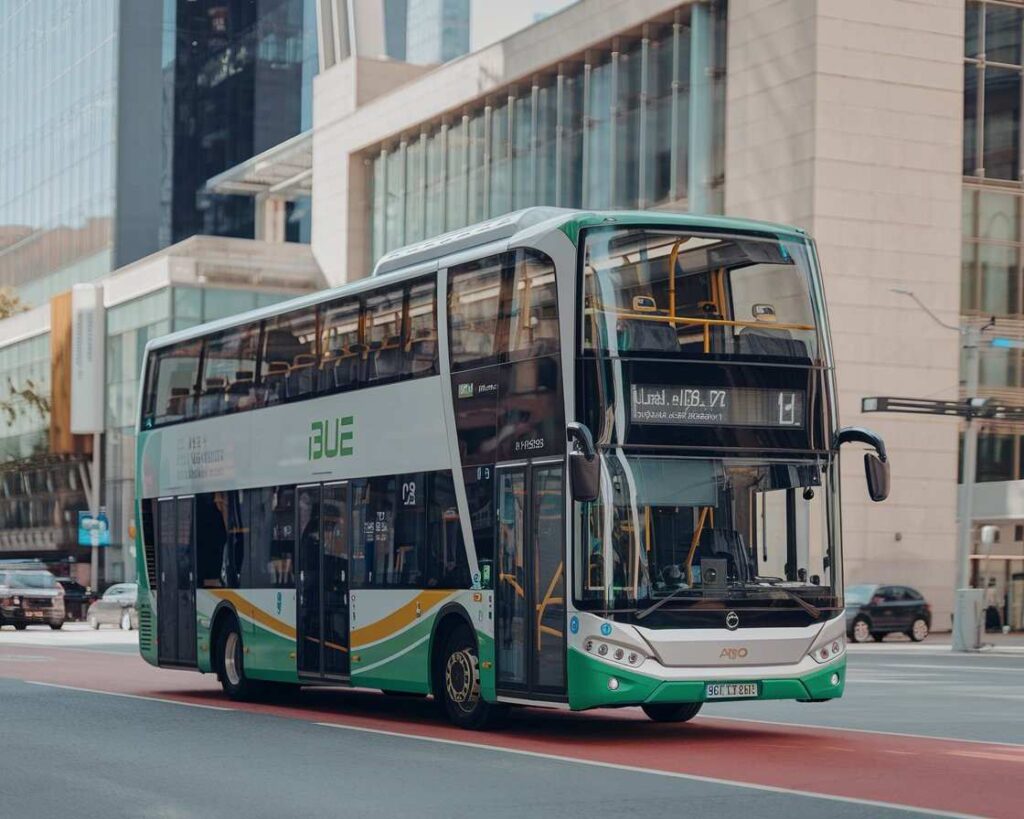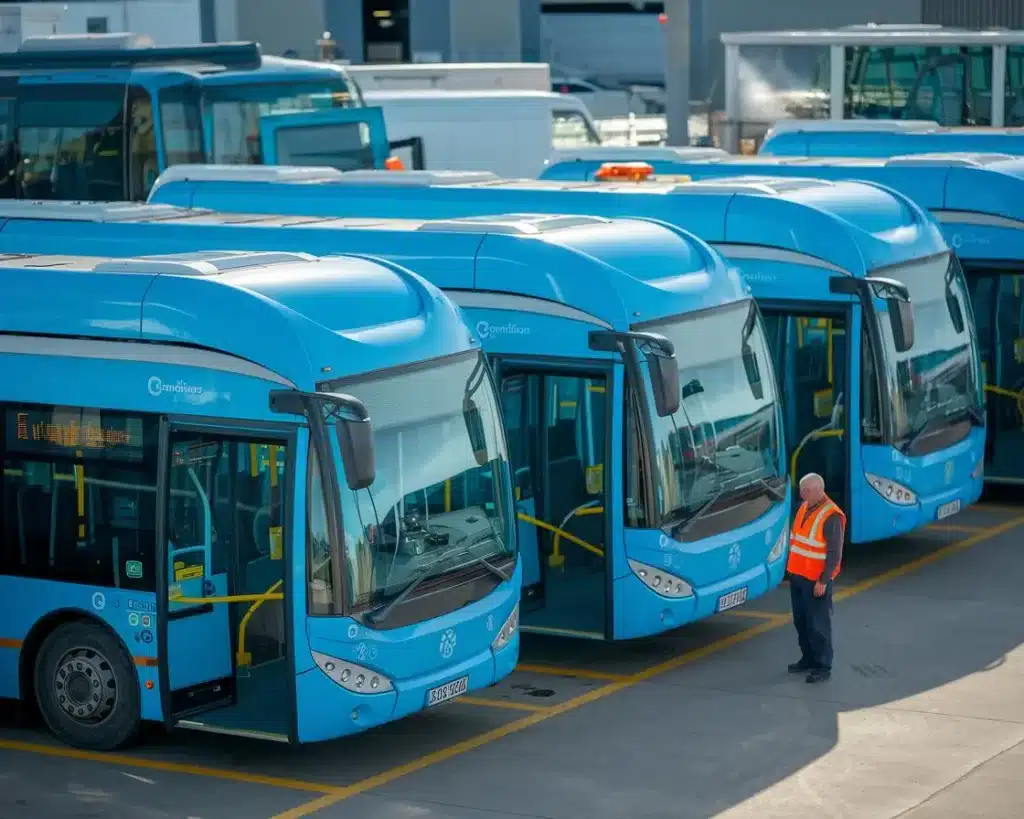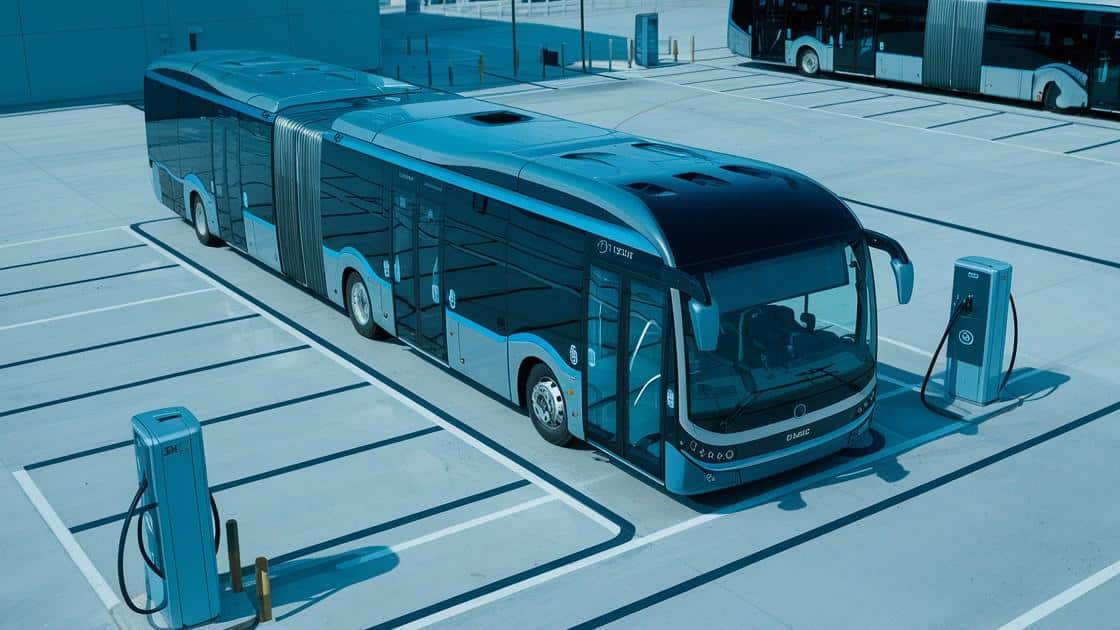Public transport is the backbone of urban mobility, and cities worldwide are making a bold shift toward sustainability. Electric buses are leading this revolution, offering a cleaner, greener, and more efficient alternative to traditional diesel buses. But why are cities ditching diesel and embracing electric? What makes electric buses the future of public transport? Let’s dive into the details, compare electric and diesel buses, and explore the features, designs, prices, and performance upgrades that are driving this change.
Why Are Cities Switching to Electric Buses?
Cities are under pressure to reduce carbon emissions, combat air pollution, and create healthier environments for their citizens. Electric buses are a game-changer in this regard. Unlike diesel buses, which emit harmful greenhouse gases, electric buses run on clean energy, producing zero tailpipe emissions.
But it’s not just about the environment. Electric buses are also quieter, more cost-effective in the long run, and offer a smoother ride. With advancements in battery technology and charging infrastructure, cities are finding it easier than ever to make the switch.
Why Electric Buses Are a Great Alternative for Public Transport
1. Environmental Benefits
Electric buses produce zero tailpipe emissions, making them a cleaner alternative to diesel buses. They help reduce air pollution, combat climate change, and create healthier cities. According to the International Energy Agency (IEA), switching to electric buses can cut urban CO2 emissions by up to 50%.
2. Cost Savings
While the upfront cost of electric buses is higher, they save money in the long run. Lower fuel and maintenance costs mean cities can recover their investment over time. For example, Shenzhen, China, saved $60,000 per bus annually after switching to electric.
3. Quiet and Comfortable Rides
Electric buses are significantly quieter than diesel buses, reducing noise pollution in urban areas. They also offer smoother acceleration and braking, providing a more comfortable ride for passengers.

Electric Buses vs Diesel Buses: A Head-to-Head Comparison
Let’s break down the key differences between electric buses and diesel buses. We’ll compare their features, designs, prices, and performance to see why electric is the clear winner.
Features and Design
| Feature | Electric Buses | Diesel Buses |
|---|---|---|
| Engine | Electric motor powered by batteries | Internal combustion engine (ICE) |
| Emissions | Zero tailpipe emissions | High CO2 and NOx emissions |
| Noise Level | Quiet operation | Noisy engine |
| Maintenance | Fewer moving parts, lower maintenance | Complex engine, higher maintenance |
| Design Flexibility | Compact design, more passenger space | Bulky engine, less interior space |
Electric buses are designed with sustainability in mind. Their compact electric motors and battery packs allow for more passenger space and innovative designs. Diesel buses, on the other hand, are constrained by their bulky engines and exhaust systems.
Pricing Details
Let’s talk numbers. While electric buses have a higher upfront cost, they save money in the long run.
| Cost Factor | Electric Buses | Diesel Buses |
|---|---|---|
| Initial Cost | $750,000 – $1,000,000 | $500,000 – $600,000 |
| Fuel Costs | $0.20 – $0.30 per mile (electricity) | $0.80 – $1.20 per mile (diesel) |
| Maintenance Costs | $0.10 – $0.15 per mile | $0.30 – $0.50 per mile |
| Lifetime Savings | Up to $400,000 over 12 years | Higher operational costs |
Electric buses may cost more upfront, but their lower fuel and maintenance costs make them a smarter investment over time.
Pros and Cons
Let’s weigh the pros and cons of each option.
| Aspect | Electric Buses | Diesel Buses |
|---|---|---|
| Pros |
|
|
| Cons |
|
|
Performance Comparison: Old vs New
How do modern electric buses stack up against older diesel models?
| Aspect | Modern Electric Buses | Older Diesel Buses |
|---|---|---|
| Emissions | Zero tailpipe emissions | High CO2 and NOx emissions |
| Noise Level | Quiet operation | Loud and noisy |
| Efficiency | High energy efficiency | Lower fuel efficiency |
| Technology | Advanced features like AI and IoT | Basic mechanical systems |
Modern electric buses are light-years ahead of older diesel models in terms of technology, efficiency, and environmental impact.
Government Subsidies and Incentives
Governments worldwide are offering subsidies and incentives to encourage the adoption of electric buses. These programs make it easier for cities to transition to sustainable public transport.
- United States: The Federal Transit Administration (FTA) provides grants through the Low or No Emission Vehicle Program. Cities like Los Angeles have received millions to electrify their fleets.
- European Union: The EU’s Clean Vehicles Directive mandates that 45% of new public transport vehicles be low or zero-emission by 2030.
- India: The FAME-II Scheme offers subsidies of up to 40% for electric buses, helping cities like Delhi and Mumbai make the switch.
These subsidies significantly reduce the financial burden on cities, making electric buses a more viable option.
Environmental Benefits of Electric Buses
1. Zero Tailpipe Emissions
Electric buses produce zero tailpipe emissions, making them a cleaner alternative to diesel buses. This helps reduce air pollution, which is a major health hazard in urban areas. According to the World Health Organization (WHO), air pollution causes 7 million premature deaths annually.
2. Reduced Greenhouse Gas Emissions
Electric buses significantly reduce greenhouse gas emissions, which are a major contributor to climate change. Studies show that switching to electric buses can cut urban CO2 emissions by up to 50%.
For example, London has reduced its CO2 emissions by 37,000 tons annually after introducing electric buses.
3. Noise Pollution Reduction
Electric buses are much quieter than diesel buses, reducing noise pollution in urban areas. This creates a more pleasant environment for residents and improves the quality of life in cities.
4. Energy Efficiency
Electric buses are more energy-efficient than diesel buses. They convert 75-80% of electrical energy into motion, compared to 20-25% for diesel buses. This means less energy is wasted, making electric buses a more sustainable option.
5. Renewable Energy Integration
Electric buses can be powered by renewable energy sources like solar and wind, further reducing their environmental impact. For example, Amsterdam uses solar-powered charging stations for its electric bus fleet.

Economic Benefits of Electric Buses
1. Lower Operating Costs
One of the most significant economic advantages of electric buses is their lower operating costs. Here’s how:
- Fuel Savings: Electricity is cheaper than diesel. On average, electric buses cost 0.20−0.20−0.30 per mile to operate, compared to 0.80−0.80−1.20 per mile for diesel buses.
- Reduced Maintenance: Electric buses have fewer moving parts, which means less wear and tear. Maintenance costs are 50-70% lower than diesel buses.
- Longer Lifespan: Electric buses are more durable, with a lifespan of 12-15 years, compared to 8-10 years for diesel buses.
For example, Shenzhen, China, saved $60,000 per bus annually after switching to electric buses.
2. Job Creation
The shift to electric buses is creating new jobs in manufacturing, maintenance, and charging infrastructure. For instance, companies like BYD and Proterra are expanding their operations, creating thousands of jobs in the process.
Customization Options for Electric Buses
One of the biggest advantages of electric buses is their flexibility in design and customization. Cities can tailor these buses to meet their specific needs:
- Battery Capacity: Choose from different battery sizes to optimize range and performance.
- Seating Arrangements: Customize seating layouts for maximum passenger comfort and capacity.
- Charging Solutions: Opt for overnight charging, fast charging, or even wireless charging systems.
- Aesthetic Design: Personalize the exterior and interior to reflect the city’s identity.
For example, BYD and Proterra offer modular designs that allow cities to customize their electric bus fleets.
Rider Community and Support
The shift to electric buses has created a growing community of riders, advocates, and experts who support sustainable public transport.
- Rider Feedback: Passengers appreciate the quieter, smoother rides and often become advocates for electric buses.
- Community Programs: Cities like London and Amsterdam have launched awareness campaigns to educate the public about the benefits of electric buses.
- Online Forums: Platforms like Reddit and LinkedIn have active communities discussing the latest trends and innovations in electric public transport.
Safety Features of Electric Buses
Electric buses come equipped with advanced safety features that make them a reliable choice for public transport:
- Regenerative Braking: Improves control and reduces wear on brake systems.
- Fire-Resistant Batteries: Modern lithium-ion batteries are designed to withstand extreme conditions.
- 360-Degree Cameras: Provide drivers with a complete view of their surroundings, reducing the risk of accidents.
- Emergency Systems: Equipped with fire suppression and emergency exit systems for passenger safety.
Maintenance Tips for Electric Buses
Maintaining electric buses is simpler and cheaper than diesel buses, but it still requires attention to detail:
- Battery Care: Regularly monitor battery health and avoid overcharging.
- Software Updates: Keep the bus’s software up to date for optimal performance.
- Tire Maintenance: Check tire pressure and alignment to ensure energy efficiency.
- Cleaning: Regularly clean the exterior and interior to maintain a professional appearance.

Riding Techniques for Electric Buses
Driving an electric bus requires a slightly different approach compared to diesel buses:
- Smooth Acceleration: Electric motors deliver instant torque, so gradual acceleration improves efficiency.
- Regenerative Braking: Use regenerative braking to recharge the battery and reduce wear on brake pads.
- Eco-Driving: Plan routes to minimize energy consumption and maximize range.
Long-Term Value of Electric Buses
Investing in electric buses offers significant long-term value for cities:
- Lower Operating Costs: Reduced fuel and maintenance expenses save money over time.
- Durability: Electric buses have fewer moving parts, resulting in longer lifespans.
- Future-Proofing: As governments tighten emissions regulations, electric buses ensure compliance and avoid penalties.
For example, Shenzhen, the first city to fully electrify its bus fleet, has seen a 20% reduction in operating costs and a 30% increase in passenger satisfaction.
Economic and Environmental Effects of Electric Buses
1. Improved Public Health
By reducing air and noise pollution, electric buses contribute to better public health. Cleaner air means fewer respiratory diseases, while quieter streets reduce stress and improve mental well-being.
2. Enhanced Urban Mobility
Electric buses offer a smoother, more comfortable ride, encouraging more people to use public transport. This reduces traffic congestion and improves overall urban mobility.
3. Economic Growth
The adoption of electric buses stimulates economic growth by creating jobs, reducing healthcare costs, and attracting investments in green technology.
4. Climate Change Mitigation
By reducing greenhouse gas emissions, electric buses play a crucial role in mitigating climate change. This helps cities meet their climate goals and contributes to global efforts to combat global warming.
Conclusion
The future of public transport is electric, and electric buses are at the forefront of this transformation. With zero emissions, lower operating costs, and advanced features, they offer a cleaner, greener, and more efficient alternative to diesel buses. While challenges remain, the benefits far outweigh the drawbacks, making electric buses the clear choice for cities worldwide.
So, the next time you hop on a bus, imagine a future where every ride is quiet, clean, and sustainable. That future is closer than you think!
FAQs
1. How long does it take to charge an electric bus?
Most electric buses take 2-4 hours to fully charge, depending on the battery size and charging infrastructure.
2. What is the range of an electric bus?
On average, electric buses can travel 200-300 miles on a single charge.
3. Are electric buses more expensive than diesel buses?
Yes, electric buses have a higher upfront cost, but they save money in the long run due to lower fuel and maintenance costs.
4. Which cities are leading the switch to electric buses?
Cities like Shenzhen (China), London (UK), and Los Angeles (USA) are leading the way in adopting electric buses.
5. Can electric buses operate in extreme weather conditions?
Yes, modern electric buses are designed to operate in a wide range of temperatures, though extreme cold can reduce battery efficiency.









